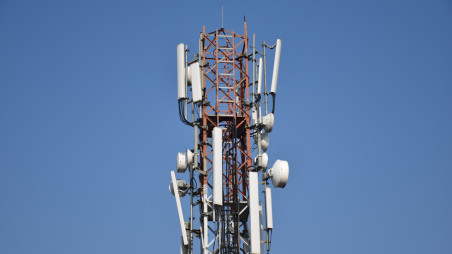Govt eyes Tk9,180cr from 180MHz spectrum auction
Last year government allotted 27.4 MHz at Tk7,634crore

- Floor price of each MHz spectrum is $6 millon
- Price could go up during auction
- Auction scheduled to be held on 31 March
- Last year government allotted 27.4 MHz at Tk7,634crore
- Earlier in 2021, itgovernment earned around Tk7,634crore by allotting 27.4 MHz spectrum
- Average user number per MHz is 11 lakhs
The government eyes a minimum revenue of Tk9,180 crore by auctioning 180MHz spectrum for 5G and other technology from 2.3GHz and 2.5GHz on 31 March.
Empowered by the government, the Bangladesh Telecommunication Regulatory Commission (BTRC) has set a floor price per MHz spectrum at $6 million.
However, the price per spectrum could go up during the auction, as in the last auction the price increased from $27 million to $46.75 million per MHz.
Mobile phone operators will have to apply by 14 March to participate in the auction, according to the Instruction Radio Frequency Auction 2022 issued by the telecom regulator.
Subrata Roy Maitra, the vice-chairman of the BTRC, told The Business Standard that operators will have to launch 5G services within six months from the date of the auction.
This time BTRC will auction 60MHz spectrum in six blocks from 2.3GHz (2300-2400 MHz) bands and 120MHz spectrum in 12 blocks from 2.6GHz (2500-2690 MHz) bands.
Last year, the government earned the highest Tk7,634 crore by assigning a total of 27.4MHz spectrum from 1800MHz and 2100MHz bands.
Earlier in 2018, the government earned around Tk3,940 crore by selling 16.6MHz of the spectrum to Banglalink and Grameenphone.
Apart from the government's revenue, the mobile phone service would also improve following the new frequency allocation by reducing user density per MHz spectrum.
At present, the user occupancy in Bangladesh per megahertz spectrum is 11 lakh, which is only two to three lakh in Nepal and Myanmar.
After the last auction, Grameenphone has 47.4MHz of the spectrum, Robi 44MHz, Banglalink 40MHz, and Teletalk 25.2MHz in three different bands.
According to the BTRC, Grameenphone, the country's largest mobile phone operator, still has the lowest spectrum coverage for its users. Over 17 lakh Grameenphone subscribers are currently occupying each MHz of the spectrum.
The second-largest operator, Robi, serves 11 lakh subscribers with the same frequency while Banglalink has nine lakh users in each MHz of the spectrum.



 Keep updated, follow The Business Standard's Google news channel
Keep updated, follow The Business Standard's Google news channel
















